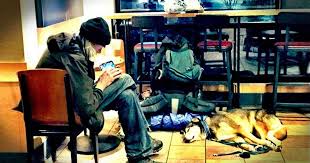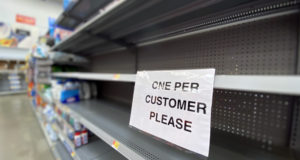Starbucks is making a terrible mistake by opening its bathrooms to people off the street. The new policy of leaving bathrooms unlocked will make Starbucks a hangout for drug addicts and derelicts, former employee Tyler Durden wrote at Zero Hedge.
The old policy at Starbucks was to leave the bathroom locked, usually with a combination lock. Employees were supposed to give the combination only to paying customers.
That policy ended after complaints that some of the coffee shop employees were letting white people use bathrooms without buying coffee. Employees have also been accused of denying the same privilege to African Americans. Now the company will leave the bathrooms unlocked at its more than 8,000 stores in the United States.
Starbucks Would Violate Law By Unlocking Bathrooms
Durden recalls having to call the fire department to get homeless people out of bathrooms at a Starbucks he worked at in Boston. Durden admitted that he did let some noncustomers use the toilets including mothers with children.
“The old rules encouraged partners to deny non-paying customers access to the bathroom, regardless of race or ethnicity,” Durden wrote. Starbucks calls its employees’ partners.
He also denied the bathroom to some because of their appearance.“When it comes to making a decision of trust, it should go without saying that some people look more trustworthy than others,” Durden said.
Durden’s belief from personal experience is that unlocked bathrooms at Starbucks will become a magnet for homeless people and drug addicts. He also noted that the policy would put Starbucks in violation of Boston ordinances that make it illegal to offer shelter to substance abusers, sex offenders and prostitutes.
Starbucks will also face difficulties keeping restrooms clean. Not to mention the presence of homeless people usually scares paying customers away.
Some commentators have argued that Starbucks’ new “unlocked bathroom policy” is actually unfair to paying customers. Retailers face increasing discrimination charges as laws and cultural standards continue to change.
Why Bathrooms Create Problems For Retailers
Locking a company’s bathroom can also generate controversy for retailers because employees that control access to toilets are, well, human beings. Being human, they’re forced to make decisions that will be seen as discrimination no matter what the decision is.
After all, decisions are based on the perceptions of “types” or stereotypes. Retailers like Starbucks can respond to the bathroom access policy with one of three strategies:
1. They can control access by only allowing paying customers to use the bathroom. This policy can lead to charges of discrimination and can be a nightmare for employees to police and enforce.
2. Adopt the McDonald’s strategy of leaving the bathroom open and letting everybody use it. The hope here is that people who use the facilities will feel obligated to buy something. Like many people, I have gone into McDonald’s to use the bathroom and ended up buying something off the Dollar Menu as a way of saying “thanks.”
3. Having a bathroom for employees’ only is another option. Most mom and pop retailers take this route because it creates fewer problems and involves fewer decisions. The most likely outcome of the Starbucks’ bathroom controversy will be that many more retailers make restrooms for employees only.
That policy ends discrimination by denying access to everybody equally. It also ensures that there will be a lot fewer public toilets in our cities and more alleys reeking of urine and feces.
Starbucks is responding to complaints by requiring all employees to undergo training for racially based “Bathroom Bias” on May 29, 2018. All Starbucks locations will be closed for the training on that day, so no one will be able to use the bathroom.
Note: Starbucks stores in other locations such as supermarkets will not be affected by the “bathroom bias training” or the new “shelter the homeless” policy. Only standalone store employees will be training for race and restroom bias.
 Off The Grid News Better Ideas For Off The Grid Living
Off The Grid News Better Ideas For Off The Grid Living





